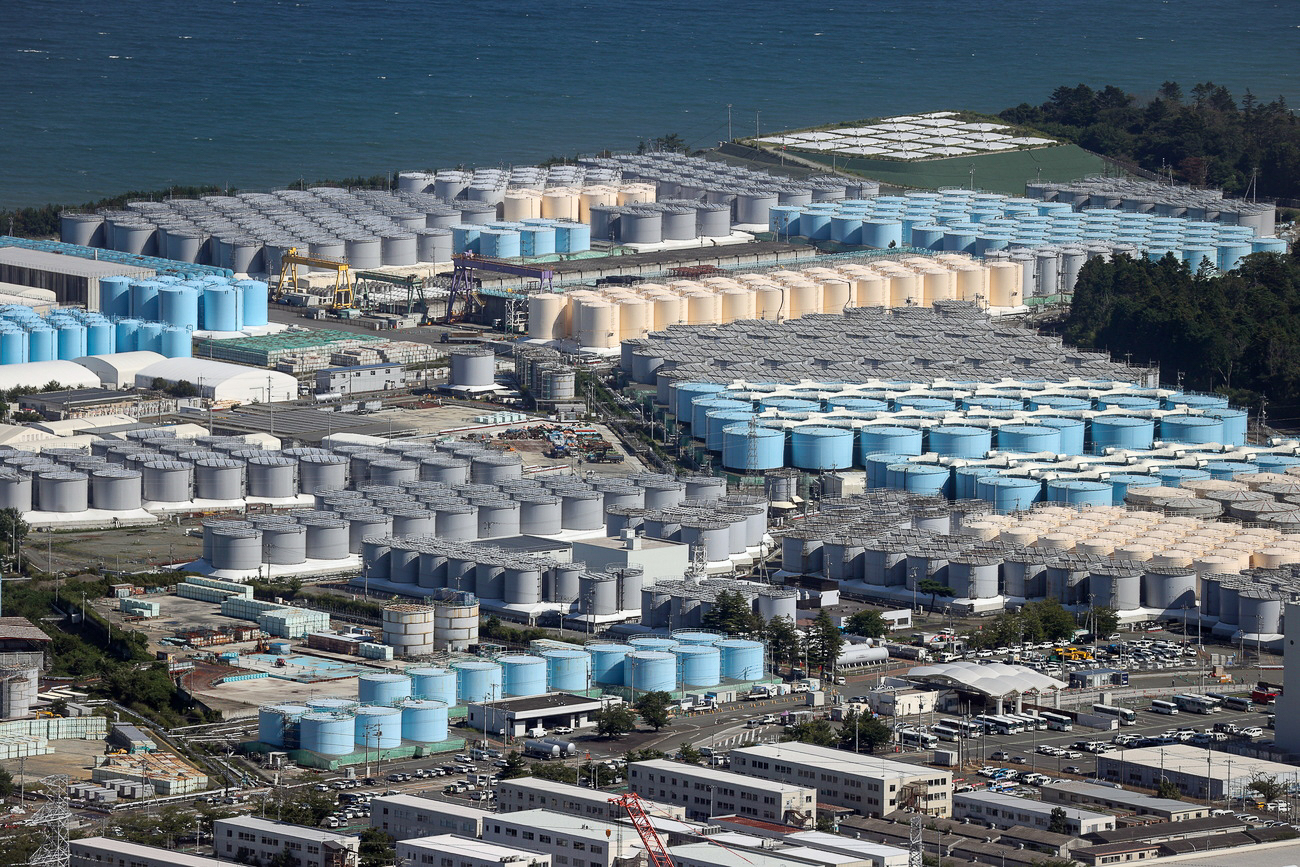Why Switzerland monitors wastewater from Fukushima’s damaged nuclear plantJapan has started releasing wastewater from the tsunami-wrecked Fuku...
Published on by Water Network Research, Official research team of The Water Network

Japan has started releasing wastewater from the tsunami-wrecked Fukushima nuclear power plant into the Pacific Ocean. A Swiss lab has played a vital role in making sure the dumping of contaminated water meets international standards. The discharges continue to stoke fears among some locals and neighbouring countries like China.
This content was published on December 20, 2023 - 09:00
December 20, 2023 - 09:00
8 minutes
Simon Bradley, Tomoko Muth, Kai Reusser
Other language: 1 (
EN
original)
On March 11, 2011, a 9.1-magnitude earthquake struck off the northeast coast of Japan's main island, generating a tsunami that killed 18,000 people. When the deadly wave hit the coast, it also crashed into the Fukushima Daiichi nuclear plant. Huge amounts of seawater were needed to cool three of the reactors and burning fuel.
Since the accident, over 1.3 million tons of wastewater have been collected, treated, and stored in over 1,000 tanks at the site. This includes groundwater and rainwater that has seeped into reactor buildings. The ongoing cooling process still reportedly produces 130 tons of contaminated water daily and space is slowly running out.
Why is the Fukushima nuclear power plant releasing wastewater?
The plant is in a region with a high earthquake risk. After years of debate and a final greenlight from the International Atomic Energy Agency (IAEA), on August 24 Japan began releasing treated radioactive water from the Fukushima plant into the ocean through a pipeline extending one kilometre from the coast. It views this as a key step in decommissioning the plant over the next 30 years.
After its lengthy review, the UN nuclear watchdog concludedExternal link this summer that Japan's plans were consistent with global safety standards and that they would have a “negligible radiological impact to people and the environment”.
How does Japan treat and release the contaminated Fukushima wastewater?
The water at the Fukushima plant is loaded with radioactive compounds, known as radionuclides, such as cesium, iodine-129, strontium-90 and tritium.
Before discharging the contaminated water into the ocean, the operator Tepco uses a powerful pumping and filtration system called ALPS (Advanced Liquid Processing SystemExternal link). This leads to many chemical reactions that remove the radioactivity as much as possible.
Attached link
https://www.swissinfo.ch/eng/sci-tech/why-switzerland-monitors-wastewater-from-fukushima-s-damaged-nuclear-plant/49043540Taxonomy
- Contaminant Removal
- National Rural Health Management